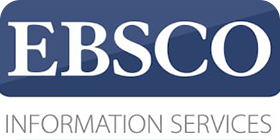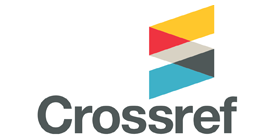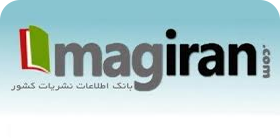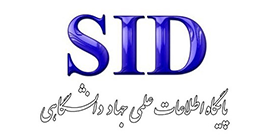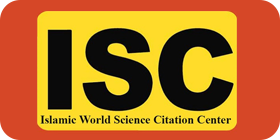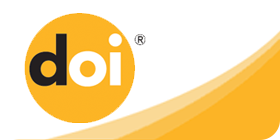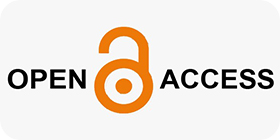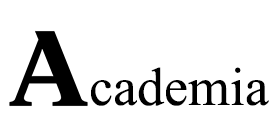The Impact of Offline Rosetta Stone on Iranian EFL Teachers’ Autonomy, Creativity, and Work Engagement
Keywords:
teachers, autonomy, creativity, work engagementAbstract
Purpose: This study aimed to examine the impact of using Rosetta Stone on Iranian EFL teachers’ autonomy, creativity, and work engagement in the light of teaching experience and gender.
Methods and Materials: A quasi-experimental research design was used, involving 60 Iranian EFL teachers from five language institutes in Ahvaz, Iran. The participants were evenly distributed across gender (male and female) and teaching experience (novice and experienced). Three standardized instruments were used to measure the dependent variables: the Teacher Classroom Autonomy Rating Scale, the Teacher Creativity Scale, and the Utrecht Work Engagement Scale (UWES-9). Teachers completed pretests and posttests before and after using the offline Rosetta Stone software. Data were analyzed using paired-samples t-tests and two-way ANCOVA to examine the effects of gender and teaching experience on the outcomes.
Findings: The results showed a significant increase in teachers' autonomy, creativity, and work engagement after using the offline Rosetta Stone software. Paired-samples t-tests indicated substantial improvements in all three variables (p < 0.05). However, two-way ANCOVA analyses revealed that neither gender nor teaching experience significantly influenced these improvements, suggesting that the software was equally beneficial across different demographic groups.
Conclusion: The findings highlight the positive impact of technology-based instructional tools on teachers’ autonomy, creativity, and work engagement, irrespective of their gender or teaching experience. The study underscores the need for integrating technological resources into teacher education and professional development programs to enhance teaching effectiveness and job satisfaction.
Downloads
References
Anastasiades, P. (2017). ICT and collaborative creativity in modern school towards knowledge society. In Research on e-learning and ICT in education: Technological, pedagogical and instructional perspectives (pp. 17-29). https://doi.org/10.1007/978-3-319-34127-9_2
Bakker, A. B., Schaufeli, W. B., Leiter, M. P., & Taris, T. W. (2008). Work engagement: An emerging concept in occupational health psychology. Work Stress, 22, 187-200. https://doi.org/10.1080/02678370802393649
Benson, P. (2001). Teaching and Researching Autonomy in Language Learning. London: Longman. https://www.pucsp.br/inpla/benson_artigo.pdf
Benson, P. (2011). Teaching and researching autonomy. Harlow: Pearson Education Limited. https://www.academia.edu/1144280/Teaching_and_researching_autonomy_in_language_learning
Bereczki, E. O., & Kárpáti, A. (2021). Technology-enhanced creativity: A multiple case study of digital technology-integration expert teachers’ beliefs and practices. Thinking Skills and Creativity, 39, 100791. https://doi.org/10.1016/j.tsc.2021.100791
Bhushan, A. (2018). Teachers Autonomy: A Tool for Creating Learners Autonomy University of Mumbai]. https://www.researchgate.net/publication/330411772_Teachers_Autonomy_A_Tool_for_Creating_Learners_Autonomy
Bicer, A., Aleksani, H., Butler, C., Jackson, T., Smith, T. D., & Bostick, M. (2024). Mathematical creativity in upper elementary school mathematics curricula. Thinking Skills and Creativity, 51, 101462. https://doi.org/10.1016/j.tsc.2024.101462
Çelik, H. C., & Bindak, R. (2005). Examining the computer attitudes of primary school teachers according to various variables. Inonu University Journal of the Faculty of Education, 6(10), 27-38. https://www.researchgate.net/publication/228965456_Analysing_attitudes_of_candidate_teachers_towards_computer_in_terms_of_various_factors
Chappell, P. (2016). Creativity through inquiry dialogue. In Creativity in language teaching. Perspectives from Research and Practice (pp. 130-145). https://doi.org/10.4324/9781315730936-9
Cinches, M. F. C., Russell, R. L. V., Chavez, J. C., & Ortiz, R. O. (2017). Student engagement: defining teacher effectiveness and teacher engagement. J. Instituti. Res. South East Asia, 15, 5-19. https://www.researchgate.net/publication/317165358_Student_engagement_Defining_teacher_effectiveness_and_teacher_engagement
Cropley, A. (2001). Creativity in education and learning. London: Kogan Page. https://www.scirp.org/reference/referencespapers?referenceid=654615
Damanik, J. (2024). Unlocking Teacher Professional Performance: Exploring Teaching Creativity in Transmitting Digital Literacy, Grit, and Instructional Quality. Education Sciences, 14(4), 384. https://doi.org/10.3390/educsci14040384
Dargut, T., & Çelik, G. (2014). Pre-service Turkish language teachers’ attitudes and thoughts toward use of technology in education. Journal of Mother Tongue Education, 2(2), 28-41. https://files.eric.ed.gov/fulltext/EJ1409244.pdf
Durak, H., & Seferoğlu, S. S. (2016). Investigation of social media literacy and social media usage patterns in Turkey. The Journal of International Social Research, 9(46), 526-535. https://doi.org/10.17719/jisr.20164622619
Ertmer, P. A., Ottenbreit-Leftwich, A. T., Sadik, O., Sendurur, E., & Sendurur, P. (2012). Teacher beliefs and technology integration practices: A critical relationship. Computers & Education, 59(2), 423-435. https://doi.org/10.1016/j.compedu.2012.02.001
Gee, G. C., Ro, A., Shariff-Marco, S., & Chae, D. (2009). Racial discrimination and health among Asian Americans: Evidence, assessment, and directions for future research. Epidemiologic reviews, 31, 130-151. https://doi.org/10.1093/epirev/mxp009
Griffin, R. A., Martinez, J., & Martin, E. P. (2014). Rosetta Stone and language proficiency of international secondary school English language learners. Engaging Cultures and Voices, 6(2), 36-73. https://www.researchgate.net/publication/261360061_Rosetta_Stone_and_language_proficiency_of_international_secondary_school_English_language_learners
Guay, F. (2021). Applying Self-Determination Theory to Education: Regulations Types, Psychological Needs, and Autonomy Supporting Behaviors. Canadian Journal of School Psychology, 37(1), 75-92. https://doi.org/10.1177/08295735211055355
Hakanen, J. J., Bakker, A. B., & Schaufeli, W. B. (2006). Burnout and work engagement among teachers. J. Schl. Psychol., 43, 495-513. https://doi.org/10.1016/j.jsp.2005.11.001
Hart, T. (2004). Opening the contemplative mind in the classroom. Journal of Transformative Education, 2(1), 28-46. https://doi.org/10.1177/1541344603259311
Henriksen, D., Hoelting, M., & Deep-Play Research, G. (2016). A systems view of creativity in a YouTube world. TechTrends, 60, 102-106. https://doi.org/10.1007/s11528-016-0047-2
Henriksen, D., Mishra, P., & Fisser, P. (2016). Infusing creativity and technology in 21st century education: A systemic view for change. Journal of Educational Technology & Society, 19(3), 27-37. https://www.researchgate.net/publication/311670214_Infusing_creativity_and_technology_in_21st_century_education_A_systemic_view_for_change
Holec, H. (1981). Autonomy in Foreign Language Learning. Oxford: Pergamon Press. https://www.scirp.org/reference/referencespapers?referenceid=1454927
Horowitz, M. J. (2013). States of mind: Configurational analysis of individual psychology. Springer. https://link.springer.com/book/10.1007/978-1-4899-7087-9
Huang, S. (2024). The Impact of Organizational Justice on the Degree of Work Engagement of Primary and Secondary School Teachers: Mediated by Teachers’ Professional Achievement. Tem Journal, 452-465. https://doi.org/10.18421/tem131-47
Krashen, S. (1982). Principles and practice in second language acquisition. University of Southern California. https://www.sdkrashen.com/content/books/principles_and_practice.pdf
Larsen-Freeman, D., & Anderson, M. (2013). Techniques and principles in language teaching 3rd edition-Oxford handbooks for language teachers. Oxford university press. https://acasearch.files.wordpress.com/2015/03/techniques-in-language-teaching.pdf
Li, C. (2024). Research on the Impact of Enterprise Digital Transformation on Work Engagement of Knowledge Employees. https://doi.org/10.4108/eai.8-12-2023.2344467
Loveless, A. (2002). A literature review in creativity, new technologies and learning: A report for NESTA Futurelab. https://www.researchgate.net/publication/32231354_Literature_Review_in_Creativity_New_Technologies_and_Learning
Loveless, A. (2007). Creativity, technology and learning - A review of recent literature, No. 4 update. https://research.brighton.ac.uk/en/publications/creativity-technology-and-learning-a-review-of-recent-literature
Marashi, H., & Khatami, H. (2017). Using cooperative learning to boost creativity and motivation in language learning. Journal of Language and Translation, 7(1), 43-58. https://www.researchgate.net/publication/324310825_Using_Cooperative_Learning_to_Boost_Creativity_and_Motivation_in_Language_Learning
Martha, Y. N. (2021). Exploring EFL Teachers’ Beliefs on the Implementation of Learner Autonomy in Online Classrooms. Edulangue, 4(1), 90-106. https://doi.org/10.20414/edulangue.v4i1.3454
McGrath, I. (2000). Teacher autonomy. In Learner autonomy, teacher autonomy: Future directions (pp. 100-110). https://innovationinteaching.org/docs/teacher-autonomy-sample-chapter.pdf
Mishra, P., Henriksen, D., & the Deep-Play Research, G. (2013). A new approach to defining and measuring creativity: Rethinking technology & creativity in the 21st century. TechTrends, 57(5), 10-13. https://doi.org/10.1007/s11528-013-0685-6
Nielsen, K., Nielsen, M. B., Ogbonnaya, C., Känsälä, M., Saari, E., & Isaksson, K. (2017). Workplace resources to improve both employee well-being and performance: A systematic review and meta-analysis. Work & Stress, 31, 101-120. https://doi.org/10.1080/02678373.2017.1304463
Peng, Y., & Guo, C. (2022). The Relationship Between Teacher Autonomy and Mental Health in Primary and Secondary School Teachers: The Chain-Mediating Role of Teaching Efficacy and Job Satisfaction. International journal of environmental research and public health. https://doi.org/10.3390/ijerph192215021
Prensky, M. (2001). Digital natives, digital immigrants’ part 1. On the Horizon, 9(5), 1-6. https://doi.org/10.1108/10748120110424816
Richards, J. C., & Reppen, R. (2014). Towards a pedagogy of grammar instruction. Relc Journal, 45(1), 5-25. https://doi.org/10.1177/0033688206063470
Rybakowski, J., Klonowska, P., Patrzała, A., & Jaracz, J. (2008). Psychopathology and creativity. Archives of Psychiatry and Psychotherapy, 1, 37-47. https://www.academia.edu/download/72348425/Psychopathology_and_creativity20211013-26982-ns6365.pdf
Şimşek, K., & Yıldırım, N. (2016). Constraints to open innovation in science and technology parks. Procedia-Social and Behavioral Sciences, 235, 719-728. https://doi.org/10.1016/j.sbspro.2016.11.073
Skaalvik, E. M., & Skaalvik, S. (2014). Teacher self-efficacy and perceived autonomy: Relations with teacher engagement, job satisfaction, and emotional exhaustion. Psychological Reports, 114(1), 68-77. https://doi.org/10.2466/14.02.PR0.114k14w0
Smith, R. C. (2000). Starting with ourselves: Teacher-learner autonomy in language learning. In Learner autonomy, teacher autonomy: Future directions (pp. 89-99). https://wrap.warwick.ac.uk/70245/
Son, J. B. (2018). Teacher development in technology-enhanced language teaching. Springer International Publishing. https://doi.org/10.1007/978-3-319-75711-7
Son, J. B., & Windeatt, S. (2017). Teacher training in computer-assisted language learning. Language teacher education and technology: Approaches and practices, 1. https://www.torrossa.com/gs/resourceProxy?an=5209521&publisher=FZ0661#page=17
Sternberg, R. J., & Lubart, T. I. (1995). Defying the crowd: Cultivating creativity in a culture of conformity. Free press. https://psycnet.apa.org/record/1995-97404-000
Tort-Moloney, D. (1997). Teacher Autonomy: A Vygotskian Theoretical Framework. https://eric.ed.gov/?id=ED412741
Ülker, D., & Yılmaz, Y. (2016). Learning Management Systems and Comparison of Open-Source Learning Management Systems and Proprietary Learning Management Systems. Journal of Systems Integration, 7(2). https://www.researchgate.net/publication/301758157_Learning_Management_Systems_and_Comparison_of_Open_Source_Learning_Management_Systems_and_Proprietary_Learning_Management_Systems
Wang, Z., Bukhari, N., & Han, Y. (2023). Teachers’ Beliefs on Autonomous English Learning in Chinese Universities. Theory and Practice in Language Studies, 13(4), 975-983. https://doi.org/10.17507/tpls.1304.19
Winch, C. (2004). Education, autonomy and critical thinking. London, England: Routledge. https://www.routledge.com/Education-Autonomy-and-Critical-Thinking/Winch/p/book/9780415543927?srsltid=AfmBOoow-Adz48zf3M4Eri3tNui9GQCbrJpzbFZROdW4sPsqZuEiusAs
Xanthopoulou, D., Bakker, A. B., Demerouti, E., & Schaufeli, W. B. (2009). Reciprocal relationships between job resources, personal resources, and work engagement. Journal of Vocational Behavior, 74(3), 235-244. https://doi.org/10.1016/j.jvb.2008.11.003
Downloads
Published
Submitted
Revised
Accepted
Issue
Section
License
Copyright (c) 2025 Omid Salmanpour (Author); Omid Tabatabaei; Hadi Salehi , Melor Md Yunus (Author)

This work is licensed under a Creative Commons Attribution-NonCommercial 4.0 International License.


